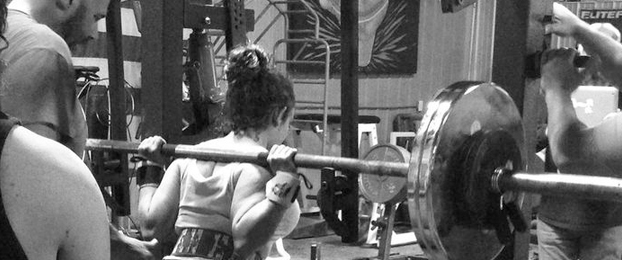
We’re all familiar with the standard warm-up routine that has been implemented for decades—jog a lap, perform a brief static stretch of the larger muscle groups, and hit the workout. Some teams may even implement some sprinting mechanical drills (SMD) or general calisthenics (i.e. high knees, butt kicks, A skip, B skip) before the fury is unleashed. However, more than likely, there isn’t any planning behind the warm up. They just do the drills for the sake of doing them or because another team does them.
What if the warm up was designed around the activity being performed or a biomechanical imbalance that was inhibiting the athlete’s performance? This appears to be a better way to train an athlete. However, let’s first identify what happens to the body during the warm up and discuss how it can improve our performance.
Physiology
As you sit there reading this article, your heart rate is probably thumping between 60 and 80 bpm. Your respirations are probably about 12–20 per minute with a blood pressure of about 120/80. Now imagine getting up from your seat and doing some arm swings, toe touches, and maybe a hammy stretch and then getting into the meat of the workout. Ouch. That hurts just thinking about it.
Now try this. Get up, skip rope for about two minutes, do some joint mobility drills (depending on the workout) followed by a few minutes of myofasical therapy on the foam roller focusing on the major muscle groups used in the workout, and then some flexibility movement patterns (dynamic flexibility/stretching). Finish off with some pre-habilitation/activation exercises to wake up the tiny intrinsic muscles that stabilize the joints. Man, I feel ready to break some PRs already! How about you?
But before we start pounding the iron, let’s first check our vitals and compare them to 10 minutes ago. Your heart rate is probably between 120 and 130 bpm, your respirations are probably about 30–50 per minute, and your blood pressure is probably at about 180/100. Quite a bit different than when we started. It’s almost as if we were in the middle of our workout but only now are we ready to do some damage.
You see, we have to signal to our body that something intense is about to take place (i.e. activate the central and peripheral nervous systems.) The increase in respirations affects an increased heart rate, which triggers vascular dilation, thus allowing for more blood flow. This, in turn, delivers oxygen and nutrients to power performance. Whew! In addition, our body’s core temperature increases, which warms up the muscles and tendons allowing them to be extensible and pliable and ignites our metabolism. Is it easier to stretch a piece of rubber when it’s warm or cold?
Stretching (static versus dynamic)
Now that we have physiology out of the way, it’s important to address the big debate of stretching before and after the workout. Every athlete responds differently to stimuli. One athlete may feel that a particular warm up works better for him while another athlete may like something else. However, as far as the research goes, any warm up is a good way to go.
As we stated earlier, a warm muscle/tendon has a greater chance of extensibility versus a cold muscle, but the way that muscle is stretched can affect performance. When performing a static stretch (holding a stretch for 15–60 seconds), the power production and strength potential of the muscle is reduced considerably due to the activation of the golgi tendon organ (GTO). The GTO is a structure in the musculotendinous junction that signals the muscle to relax to prevent extreme muscular tension, which could cause injury. Because prior to the beginning of the workout we’re trying to stimulate the nervous systems for performance and prepare the body for movement, a static stretch doesn’t appear to be the best choice. There are some instances where static stretches are useful pre-workout, but that’s for another article.
To achieve our goals during the warm up, I implement more movement-based flexibility patterns (also referred to as dynamic flexibility/warm up or movement preparation) with my athletes. These are movements that prepare the body for the type of training we will be performing that day. It’s a way to stretch multiple muscle groups at the same time through a specific movement whereas static stretching is in isolation. I’ve found that the athletes have a better carryover into their workout without a decrease in performance.
Here’s an example of how one might structure a warm up for a lower body training session:
General body warm up: Jump rope, two minutes
Myofasical therapy (foam roll): Calves, quads, hams, IT band, 30 seconds each)
Hip mobility: Fire hydrants, five in each direction
Movement flexibility patterns: Spiderman lunges, five each side; leg cradle/quad walk, five each side for two minutes
Activation: Overhead squats on foam for 10 reps; tuck jumps for 5 reps and two minutes
Main workout: Incorporate 2–3 warm-up sets for the main lift
Static stretch (following the workout): Upper extremities, 30 seconds per muscle group








